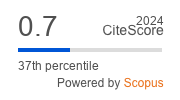Correlation between magnetic resonance imaging and intra-operative findings in disc herniation at lumbo-sacral region
Keywords:
Disc herniation,, MRI, Surgery, posterior approachAbstract
Background: Prolapsed intervertebral disc is an important and common cause of low backache. MRI has now become universally accepted investigation for prolapsed intervertebral disc. We, however, regularly come across situations, when MRI shows diffuse disc bulges, even at multiple levels, which cannot be correlated clinically and when such cases are operated, no significant disc prolapse is found resulting in negative exploration.Objective: To evaluate the role of M.R.I. finding not only for diagnosis of disc herniation at lumbar region but also for localization the level of herniationMethods: A prospective study on seventy five symptomatic low backache and MRI confirmed prolapsed intervertebral disc patients at lumbo-sacral region were operated on, all of the cases required excision of disc through posterior approach in knee elbow position. The time between MRI taken and surgery was two weeks, from which the data were taken in a questioner forma which include name , age ,gender , occupation , chief complaint , duration, MRI findings and intra operative finding , from June 2011 to October 2013 at Al- Kindy teaching hospital .Results: In our study 75 patients were diagnosed by clinical examination and MRI finding to have disc herniation at lumbar region . The female more than male( 36 females , 12 males) and the ratio was 5-1, the accuracy of MRI against intra operative finding in deciding the provisional diagnosis as disc herniation was 68% .The commonest site was L4-5 disc herniation 43 patients (57.3 % ) , and L5-S1 prolapse is the next common disc herniation level 27 patient (36 % ) , L3-L4 disc herniation was two cases (2.7 %) and L4-L5 ,L5-S1 disc herniation was 3 cases (4% ).Conclusion: The most common level was L4-5 followed by L5S1.The MRI is more accurate in diagnosis of the lumbo-sacral disc herniation and its level in single one is more than multiple levels.Keywords: Disc herniation, MRI, Surgery, posterior approachAl













